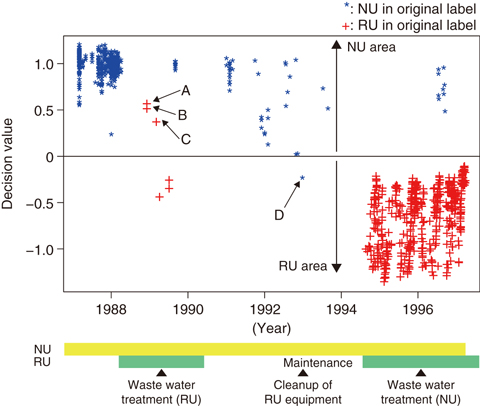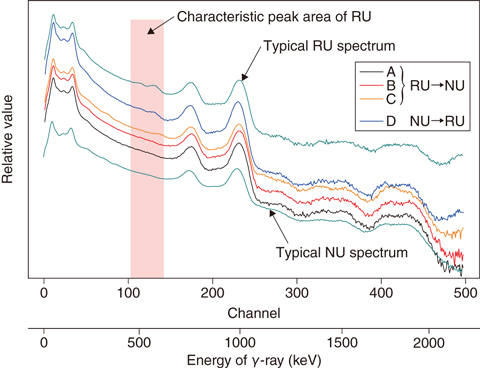
Fig.8-4 Comparison between original labels and machine-learning-classification results

Fig.8-5 Comparison of the typical γ-ray spectra for NU and RU with those of the four data classified differently from their original labels
Machine learning algorithms automatically extract and interpret the features of datasets to predict other datasets based on learning results. Pattern recognition, one of the machine-learning methods, chooses a class to which data should belong from classes ready beforehand. A feasibility study on the support vector machine (SVM) pattern-recognition method was performed to classify various waste drums based on low-resolution γ-ray spectral datasets that were obtained by non-destructive measurements.
The waste drums in the Ningyo-toge Environmental Engineering Center have been classified into two types according to their origins, namely natural uranium (NU) and reprocessed uranium (RU). Their compositions of radioactive nuclides differ depending on this origin. The γ-ray spectra of both NU and RU have energy peaks of 1001 keV and 766 keV caused by 238U progeny. In addition, those of RU have characteristic energy peaks of 238, 510, and 583 keV caused by 236U and 232U progeny.
In this study, the γ-ray spectra obtained from 967 drums with NaI scintillation detectors were investigated. The drums contain precipitation generated by wastewater treatment in the refining and conversion process to produce uranium hexafluoride (UF6) from uranium ore or yellowcake. Their generation dates and origins, namely NU or RU, were traceable by the labels attached. 12 data from the dataset were chosen for “learning” about the correlation between the spectra and the labels. Another 955 drums were used for examination to classify into NU or RU by γ-ray spectra, and the examination itself took less than 1 sec. The results showed that 4 out of 955 data were different from their original labels. In Fig.8-4, a smaller decision value exhibited clearer the characteristic peaks of RU in the spectra, while a larger value showed vaguer characteristic peaks of RU. Considering the operation history, it was estimated that one of the named four data was mislabeled, whereas the others were misclassified by SVM (Fig.8-5).
These findings show that SVM is feasible for rapid classification of drums according to their uranium origin to an accuracy above 99%. It is a great advantage that SVM provides numerical indicators even in the boundary area of the classification. SVM is an effective method for supporting the classification of drums. Its application of classification to other classes should be studied further.
<Previous: 8 Research and Development Related to the Backend of the Nuclear Fuel Cycle and the Reprocessing of Spent Nuclear Fuel | Next: 8-2>